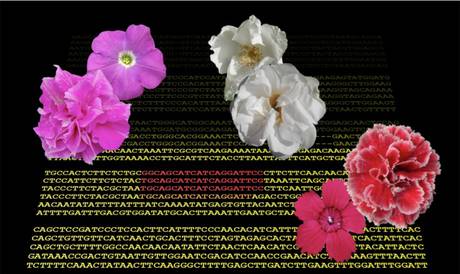If common plants such as roses, carnations and petunias are rich in petals, it is thanks to their DNA and, in particular, to a hyperactive gene. This is shown by the Italian study published in the Journal of Experimental Botany by the group of the Milan University coordinated by Laura Rossini, of the Institute of Agricultural Biology and Biotechnology of the National Research Council (Ibba-Cnr), and by Stefano Gattolin, of the Paduan Technology Park from Lodi.
Using DNA databases of different plant species, the researchers identified very similar mutations, connected to a key gene of the development of the flower, which they modify the regulation in order to make it work longer until there is an abundance of petals .
"It was really surprising to analyze the genes we believed involved one by one and to gradually find similar mutations in the Rugosa rose, in carnations and in the popular double petunias, that is, those with an increased number of petals," observed Gattolin.
In red the mutations that alter the regulation of the gene that stimulates the formation of the petals (source: Stefano Gattolin)
The varieties of flowers that have a higher number of petals than the traditional five are highly sought after in the nursery market. Over the centuries, man has selected the natural mutations that have occurred in this group of genes, thus promoting the spread of varieties with spectacular blooms. For Rossini, “the transfer of this gene information to different species was by no means a foregone conclusion. Just think - he added - that the plants we studied are so different that their common ancestor dates back to the Cretaceous, when the world was still dominated by dinosaurs ".
This knowledge, the experts conclude, may in the future be applied to the development of new double-flowered varieties in other plants, also through the new techniques of cutting and gluing the DNA, which allow specific gene sequences to be modified in a targeted manner.














